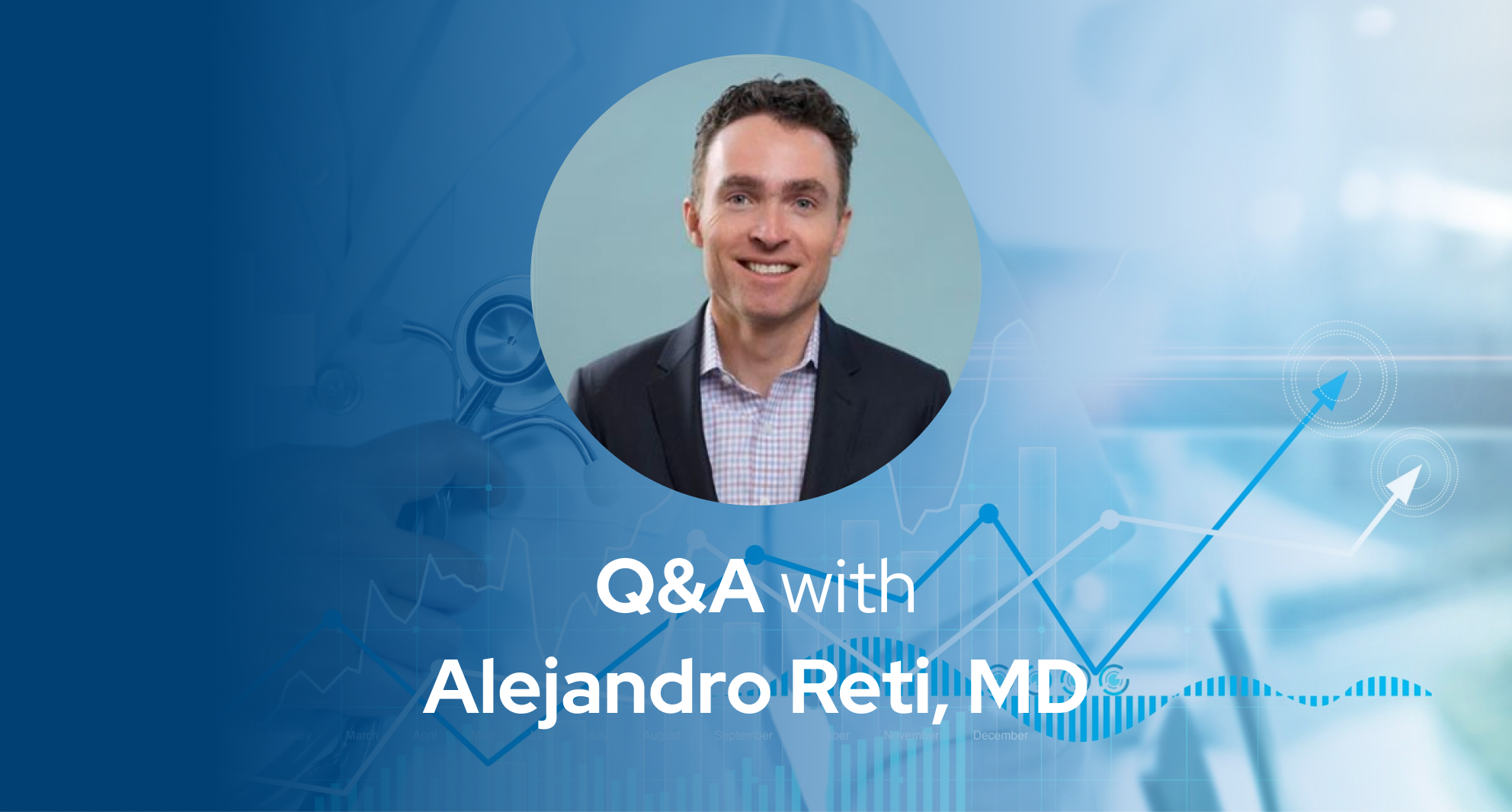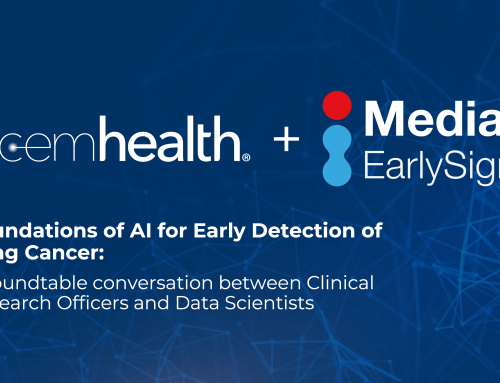
Improving Predictability & Long-Term Care Costs with Early Detection: Q&A with Alejandro Reti, MD
In our recent webinar, we had the pleasure of hosting Alejandro Reti, MD, a physician executive who served most recently as CEO for Vivify Health and prior as a national medical director focused on implementation of value-based care programs within the Optum/United Healthcare ecosystem. Alejandro shared his perspectives on managing long-term costs of care, the importance of predictability in healthcare costs, and early disease detection’s impact on implantable devices.
Note: Questions and responses edited for context and clarity.
Managing Long-Term Costs of Care
You’ve spent considerable time working on how to manage long-term costs of care. We have spoken about the data on lower costs of treating early-stage disease. That seems pretty obvious, right? But when it comes to value-based care, total cost and predictability of cost both are important.
Could you talk a little bit more about what you mean by ‘predictability’?

“Yeah, sure. I think one of your examples is colon cancer, so I can start there. Predictability can be an actuarial perspective: What’s the standard deviation of likelihoods of cost for any given patient? The issue is, as you get into the more severe continuum of disease, the variability starts to increase a lot, and it increases because the variability of outcomes starts to increase. And the cost of therapy often tends to go up.
So, at Stage I, a colon cancer patient will cost you around $50,000-$60,000 to treat that first year. Stage IV will be 3-5 times that, depending on which study you look at. But the variability on that Stage I patient is about $100,000. The variability on that stage four patient is $200,000-$250,000. From a standard deviation perspective, even that hides the true variability in that some of these patients, they will end up being put on novel recently developed therapeutics that may cost 250,000 for a treatment course, or more. Since 2009, the average cancer medication approved by the FDA are all in excess of $100,000 a year.
So that’s one example of early detection increasing predictability of costs, because if you have a lot of variability in spend you just have a harder time predicting what your overall population spend is going to be and you’re more dependent on reinsurance, which is expensive in general from a payer perspective.”
“The second thing here though is also there’s this idea of durability, right? So that Stage I colon cancer patient is only going to cost you $5,000-$6,000 the next year because you’re going to cure that patient most likely, and their spending is basically going to go down to baseline with a little bit of extended surveillance.
To contrast, a Stage IV patient is going to cost you $70,000-$100,000 a year in perpetuity, basically because we don’t generally cure them. And if we do, at least temporarily, there are usually other things that are going wrong that have to be managed.”
Heart Failure and Early Detection
Considerable discussion has centered around capacity, particularly in relation to heart failure patients, who are notably at high risk for readmission. Even within a population health model, it remains challenging to prevent hospital readmissions, despite adherence to prescribed guidelines.
Is this part of that ‘predictability’ of cost that you discussed earlier?

“Yes. I think inpatient cost is a big driver of overall spending in your higher risk heart failure patients. And one thing most people don’t realize is that in some of the data that I’ve seen in Medicare patients up to half the patients only get diagnosed upon a first admission. So, that is a crisis that tells you they even have heart failure to begin with because they’re not being detected earlier. And a patient who is admitted, you routinely see in these populations readmission rates over the next 6-12 months of 30-50%.
So, these patients are repeat admitters and that’s what drives the overall spend in the $50,000-$100,000 range for some of these patients. In contrast, your drug therapy for patients diagnosed early with heart failure, it’s costing $500 a month. So, it’s not insubstantial, but it’s a lot less than that inpatient spend component.”
Screening Programs and Cost-Effectiveness

“The other thing I wanted to call out, I think is important, is that screening programs generally don’t make a lot of money for providers. They’re also generally not super cost effective in the real world for payers. Let’s take breast cancer, for example, you have to have 20 positive mammogram [lesion findings] to catch a single cancer. And you’re doing a lot of breast MRIs on these patients. You’re doing 5-7 biopsies across these [20] positive mammograms, you’re doing repeat mammograms – that drives a lot of cost to catch those cancers in the real world.
You know, a colonoscopy is a lot better, and the main reason is that your treatment is done alongside that initial diagnostic. If you see a polyp, you remove it and you’re done. You don’t have to do anything else except send it to pathology. So, I think colonoscopy has something like a modeled $30,000 per life saved metric, which is pretty good in the grand scheme. But people don’t like to get colonoscopy. So, you’ve got that 30-40% of the population overdue or who have never had one. There are new liquid biopsy tests, blood tests, there are stool DNA tests – those help get your screening rates up, but their cost effectiveness is worse, substantially worse, because they generate more false positives and all those positives must receive a colonoscopy.
From a payer perspective, if you’re able to subset those patients and identify the patients who are more likely to have cancer among that universe of patients who are overdue, you can very quickly and rapidly improve the cost effectiveness of that overall screening program by doing a better job at getting those specific patients in for screening.
So, I think it’s good for society, right? Because it helps put screening in the black from a from a payer total cost of care perspective.”
Implantable Devices and Early Detection
What are your insights on implanted devices and how can those enable early detection of complications down the road?

“Coming from a remote patient monitoring background, I think that sort of thing is the crux of what that technology tries to do. And I will say that the benefit of these smart implantables or devices that are designed to collect biometric data at a much more frequent basis, it gives you more data to work with, and absolutely there’s no question that it helps you detect issues potential decompensation changes earlier.
I think what is not nearly as obvious is whether that’s happening in a cost-effective form and manner, because these things tend to be expensive, and you really have to look carefully at the outcomes you are achieving when you detect issues earlier. With real world use, how effectively can you actually intervene in a manner that generates a better outcome?
In general, these things have, in my experience, they have to be tied with advanced algorithms to sort through the information. Because if you’re requiring a physician or a highly trained nurse to look at the data and decide whether they need to do something about it, that almost always kills the economics of these types of initiatives.
I definitely believe in it, and I think it’s going to create some really interesting opportunities. One of the [opportunities] most exciting to me in cancer is smart [central] catheters in patients are in an ambulatory setting, we some really interesting data coming [from them]. These are very high-risk patients; very bad things happen to them when things go wrong. But the [catheters are] expensive, right, and they’re not widely used today.”
Curious to learn more about the benefits of early disease detection? Check out the webinar recording or head over to our blog!
